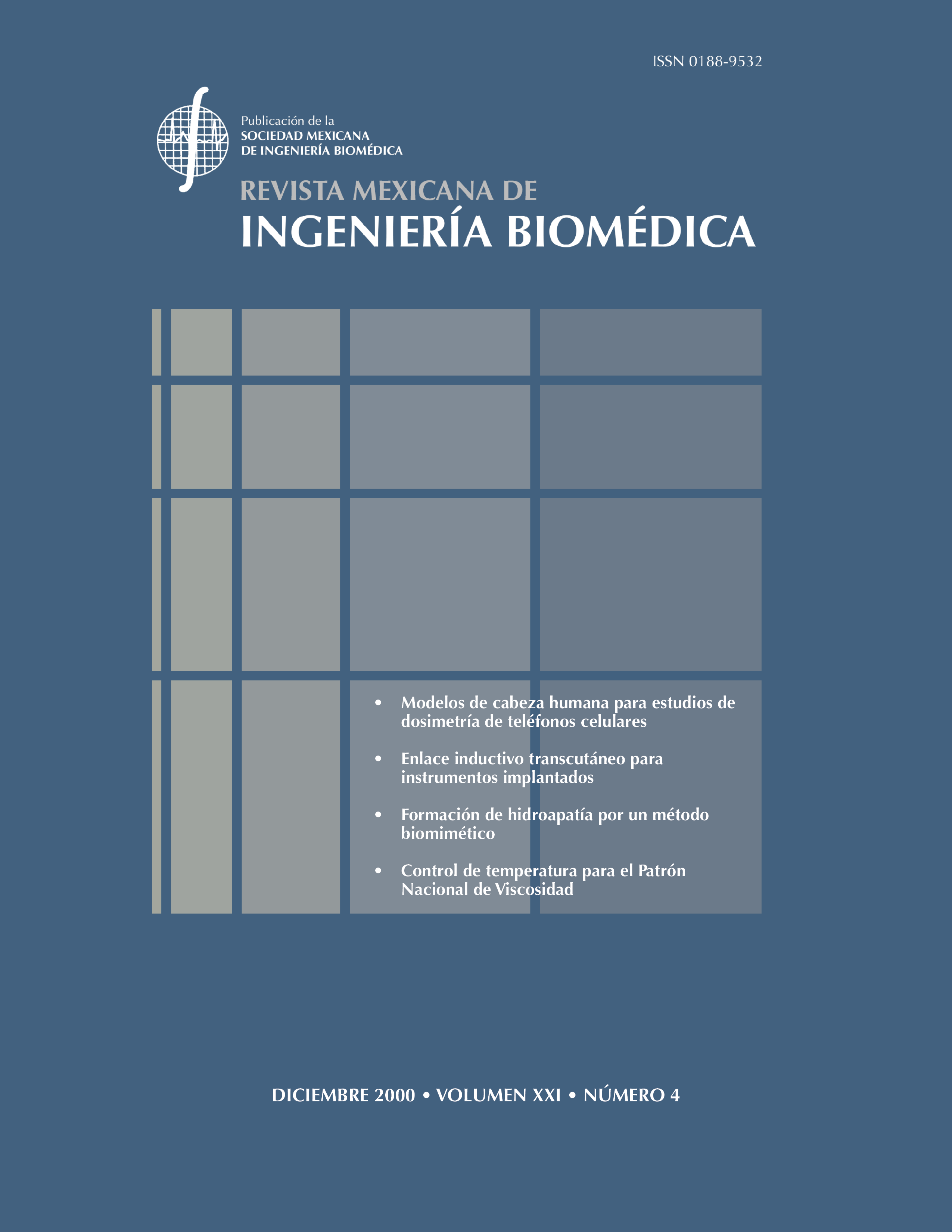Formación de hidroxiapatita sobre una superficie polimérica por un método biomimético
Abstract
Biomimetic growth of calcium phosphate compound on porous polyurethane (PU) treated with tetraethyl orto-silicate (TEOS) and soaked in simulated body fluid solution was studied using scanning electron microscopy (SEM), energy dispersive X-ray analysis, and Fourier Transformed infrared spectroscopy-attenuated total reflectance (FTIR-ATR). Polyurethane was treated with TEOS in order to lead to the formation of silanols groups which stimulated the growth of hydroxyapatite when immersed in simulated body fluid solution (SBF). Polyurethanes not treated with TEOS did not how calcium phosphate growth upon immersion in SBF solution. The Ca and P determined by EDAX and inductively coupled plasma spectroscopy (ICP) analysis revealed that surface layer was no – stoichiometric hydroxyapatite, but carbonated– containing hydroxyapatite with Ca/P ratio of 1.5 – 1.6, this was confirmed with FTIR-ATR.
Downloads
Downloads
Published
How to Cite
Issue
Section
License
Upon acceptance of an article in the RMIB, corresponding authors will be asked to fulfill and sign the copyright and the journal publishing agreement, which will allow the RMIB authorization to publish this document in any media without limitations and without any cost. Authors may reuse parts of the paper in other documents and reproduce part or all of it for their personal use as long as a bibliographic reference is made to the RMIB. However written permission of the Publisher is required for resale or distribution outside the corresponding author institution and for all other derivative works, including compilations and translations.




